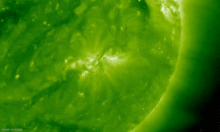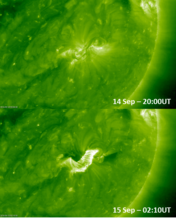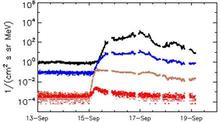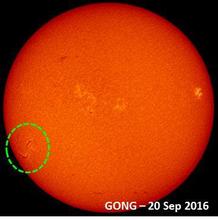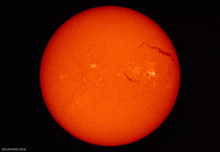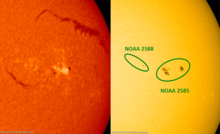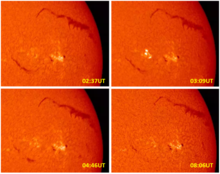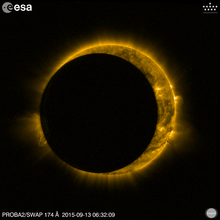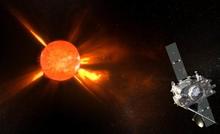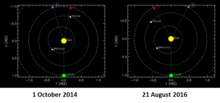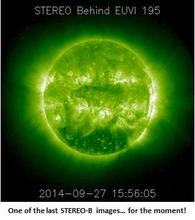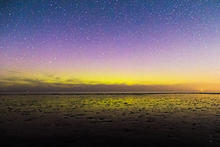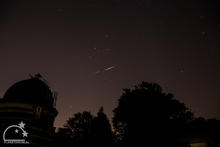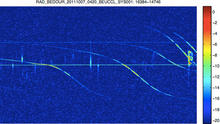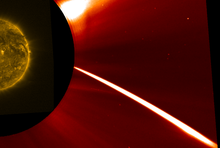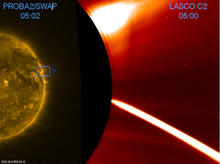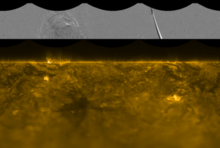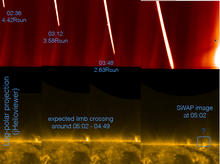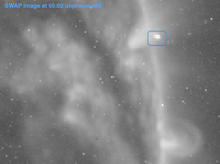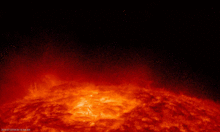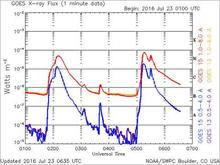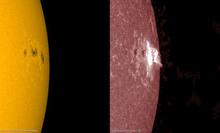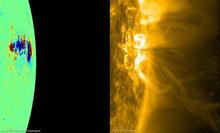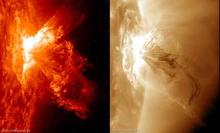news
Submitted on 2016-09-20For the second consecutive week, no C-class flares were observed from Earth. In fact, not a single C-class flare has been recorded so far this September month, with the last C-class event dating back already from late on 31 August. Records will not be broken soon though, as the longest period without a C-class flare was set during the past solar cycle minimum from 3 April till 3 November 2008 (213 days!).
Submitted on 2016-09-12Solar flare activity was not particularly impressive last week, with no C-class events at all. Fortunately, a B7.9 flare peaking at 03:23UT on 09 September in active region NOAA 2588, was associated with a lovely post-flare effect: the disappearance of almost an entire filament about 10 degrees to the southeast of this active region.
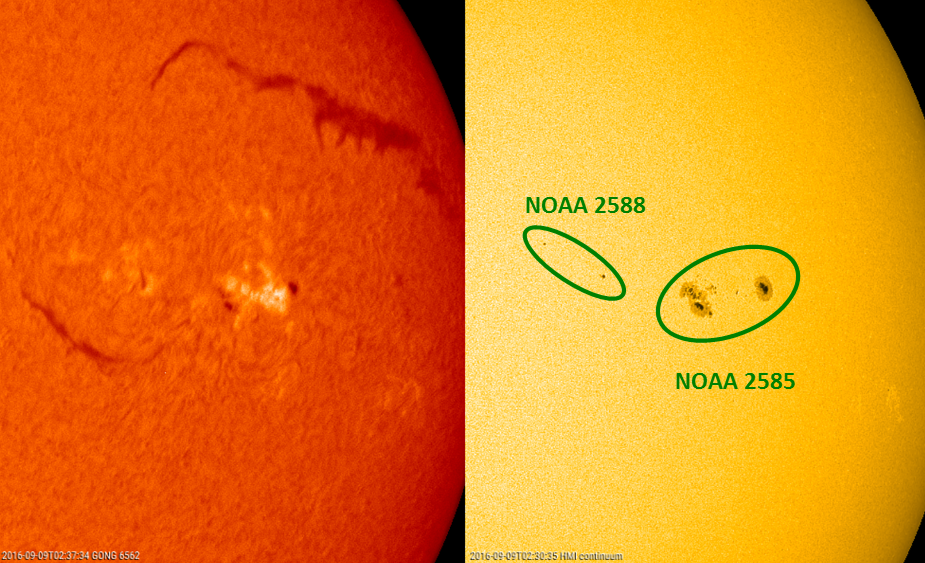
Submitted on 2016-09-05
The deadline Sept 12th for nomination for one of the prestigious medals in space weather, linked with the European Space Weather Week is approaching.
Submitted on 2016-09-01
We received the first data from PROBA2 of the September 1 annular solar eclipse. Again, PROBA2 was on the first row in space and therefore certain to witness it, clouds or not.
Submitted on 2016-08-30On 1 October 2014, communications with the STEREO-B spacecraft were interrupted during a planned test in anticipation of its solar conjunction at the Sun's farside (see image underneath for positions relative to Earth). Despite intense recovery efforts in the subsequent months, contact could not be re-established and the spacecraft seemed to be lost. More background information can be found in the news items of 4 June 2014 and 29 July 2015.
Submitted on 2016-08-26
A high-speed solar wind emanating from a solar coronal hole reached the orbit of the earth with sparking firework on August 23-24 photographed from Franeker, the Netherlands.
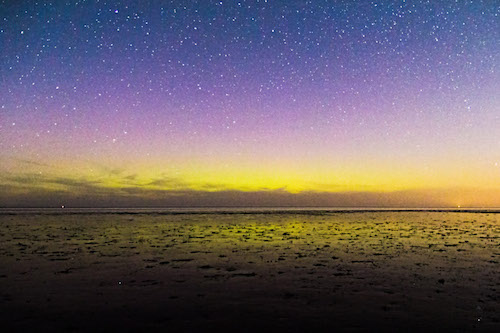
Credits: Vincent Van Leijen
Submitted on 2016-08-19
The public was invited to search in the night sky for falling stars of the Perseids, a meteorswarm between the prestigious couples of the observatory in Uccle. It was a great evening on August 10.
Submitted on 2016-08-11
It's the time of the year to catch falling stars. These are in facts meteors. A technique is developed at the space pool to listen and identify them. And, you can help!
Submitted on 2016-08-11Did the EUV space telescope onboard PROBA2 see the sun-grazing comet as a tiny dot on the solar surface lightening up? This is the story of 5 mysterious pixels.
Submitted on 2016-07-26Last week, NOAA 2567 continued its growth in magnetic complexity and sunspot area. Early on 21 July, this active region produced an M1.2 flare which was the first "medium" event since the M6 flare on 18 April this year by NOAA 2529 (see the 19 April news item). NOAA 2567 would produce a total of 7 M-class flares, the strongest being an M7.6 event on 23 July which was the most powerful since the M7.9 flare by NOAA 2371 more than a year ago (see this 5 August 2015 news item).
Pages
Zircon - This is a contributing Drupal Theme
Design by
WeebPal.

